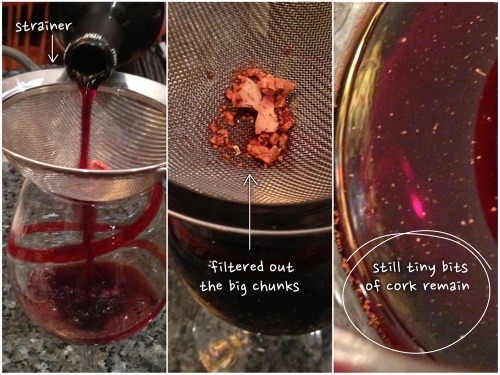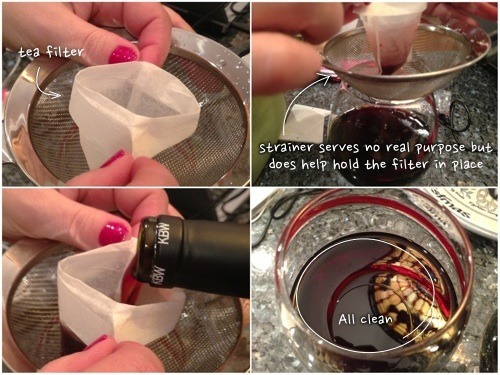As terrifyingly frightening as it is to get cork in your wine, it happens—usually with those expensive bottles of wine that you’ve been holding onto for that special occasion.
So, why does this happen?
Broken corks are, more often than not, caused by clumsy wine opening. Maybe your aim is bad, or it’s your first time trying that electric wine opener that you got at the office party grab bag. Or just maybe, you’re completely wasted. Either way, it’s fine, it happens to all of us.
Other times, a cork will break if it is dry. This is why it is always important to store wine in proper conditions. While not everyone has a wine cellar where they can run a humidifier all day long or have a fancy thermostat, dry cork can oftentimes be prevented by storing wine on it’s side (horizontally).
Is the wine still okay to drink?
A dry cork could—but does not always—indicate that the wine has been over exposed to oxygen. This is because when the cork dries, it shrinks—letting oxygen seep in over time. This oxidization typically does not a tasty wine make.
Other people say that if your cork has mold on it, it can ruin the taste of the wine. This isn’t typical by any means, but if may be a good practice to visually inspect the cork before you try to open the wine to make sure that it’s more or less clean.
At the end of the day, whether you drink the wine or throw it away, is really up to your taste buds. If it tastes awful, just throw it out. If you are going to keep it though make sure that you have a few wine stoppers at home.
So, true story:
We were going to have a glass of wine, and ended up dicing up a cork like it was nobody’s business. After the initial shock wore off, we were on our feet looking for a solution, and grabbed a strainer… We poured the wine through the strainer into the wine glass, in a similar fashion as seen in the picture below.

But, clearly, as you can see, it was not really a success. The strainer filtered out all of the large pieces but they left tiny granules that didn’t look so appetizing.
Next we grabbed a tea filter. Sure, normal people have coffee filters; but, when you’ve been using k-cups for 5 years, you don’t just have coffee filters hanging around. Certainly, if you have coffee filters, that works perfectly as well.

In conclusion
Wine storage is equally as important as proper wine opening techniques. Also, a broken cork is not a reason to throw out a bottle of wine. A paper filter does a great job of removing any cork particles or sediments. In fact, it might be a good practice to keep some coffee filters wherever you store wine. Last but not least, if you’re going to fish out the tiny bits of cork from your wine at a party, do it in private if possible. Just the idea that there may be something wrong with the wine will send people running the other way when you offer them a refill of your filtered wine.
If you are serious about wine and break a ton of corks, you might want to consider picking up a stainless steel wine strainers. They work well, and are reasonably priced.